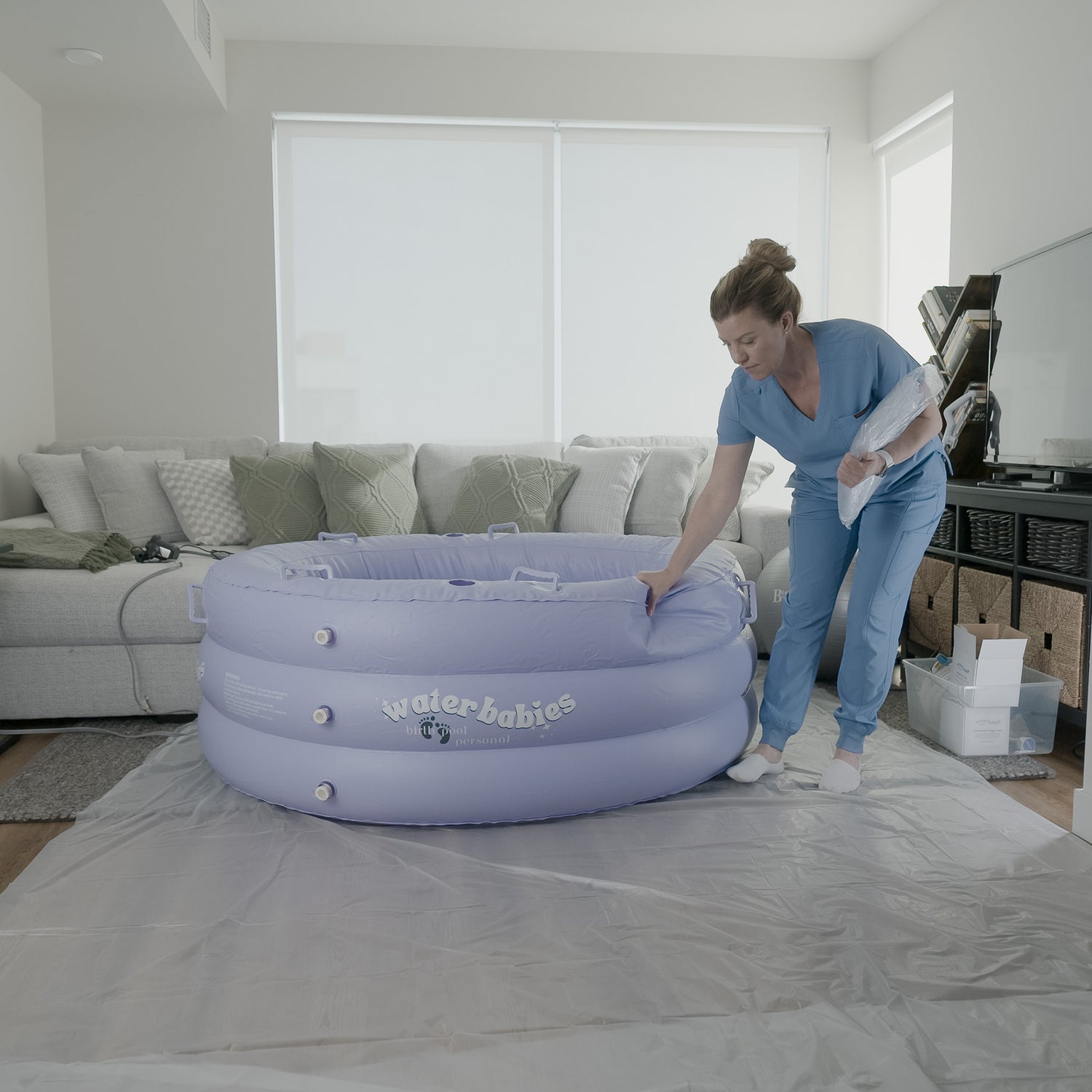
Position your pool
Before anything else you'll want to decide where to position your pool. You can't move it after it's been filled with water so this is the time.
Whether you are setting up in a home, hospital or birth centre, you'll want to consider the distance to water source (tap,faucet), distance to drain (toilet, shower) and then clearance for labour support people (partners, midwife, doula, nurse, doctor) during labour and pathway for clearance in the event of an emergency.
Hint: Keep the pool away from drafts that could affect the water temperature.

Locate the valves
Each valve has a smaller one-way valve on the outside (white) that makes inflation easy without releasing air. The inner valve (clear) can be released after use to quickly deflate the pool.
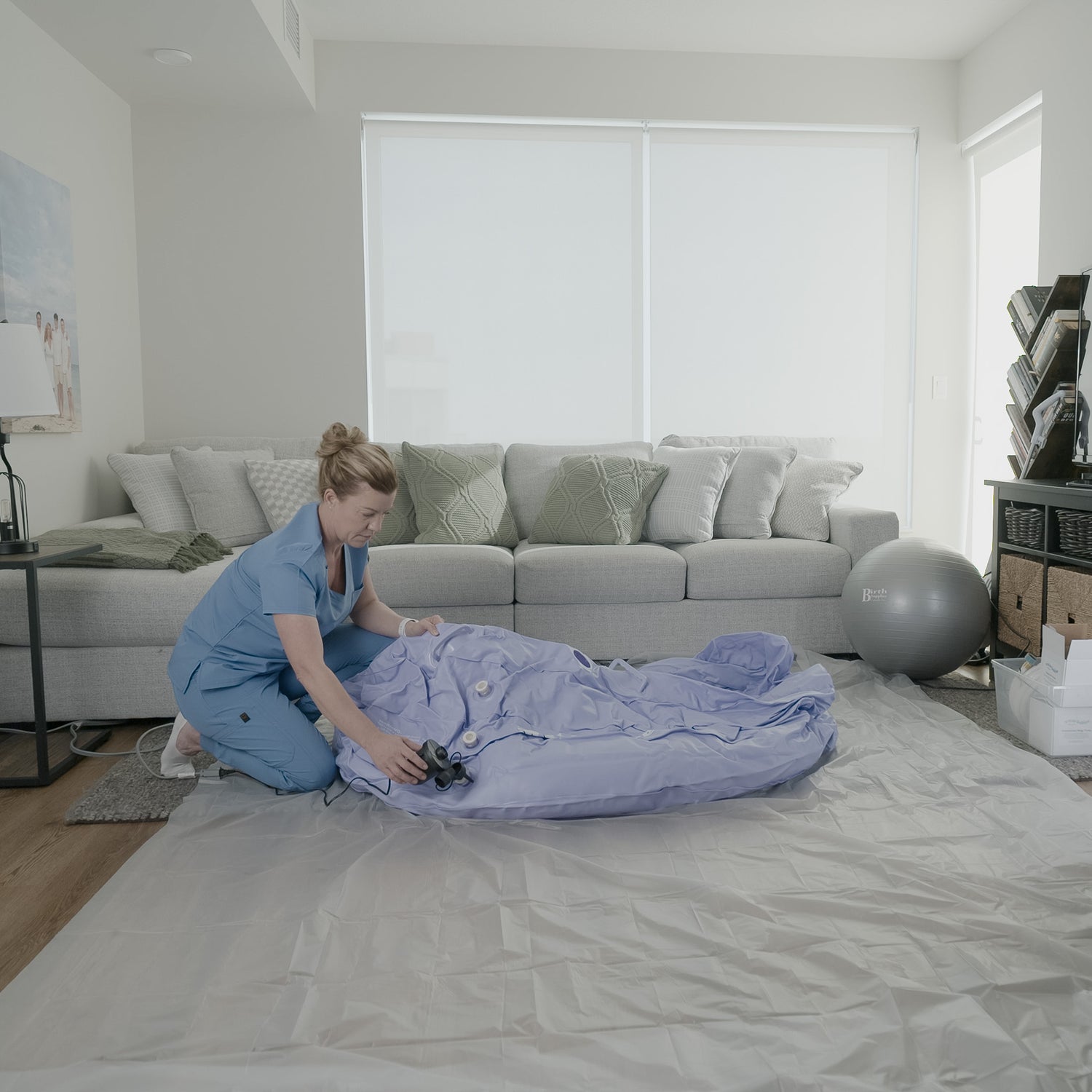
Inflate the pool
Using an electric air pump, inflate the pool starting with the bottom chamber, floor and seat.
Hint: Never use a high-power construction air compressor. This has too much pressure and will void your warranty.

Inflate the top chamber to only about 75% to leave room to for the liner. Once fitted, you'll go back and complete until firm.
You may decide to leave the pool now overnight. In the morning expect to need to add a little more air to firm up each chamber.
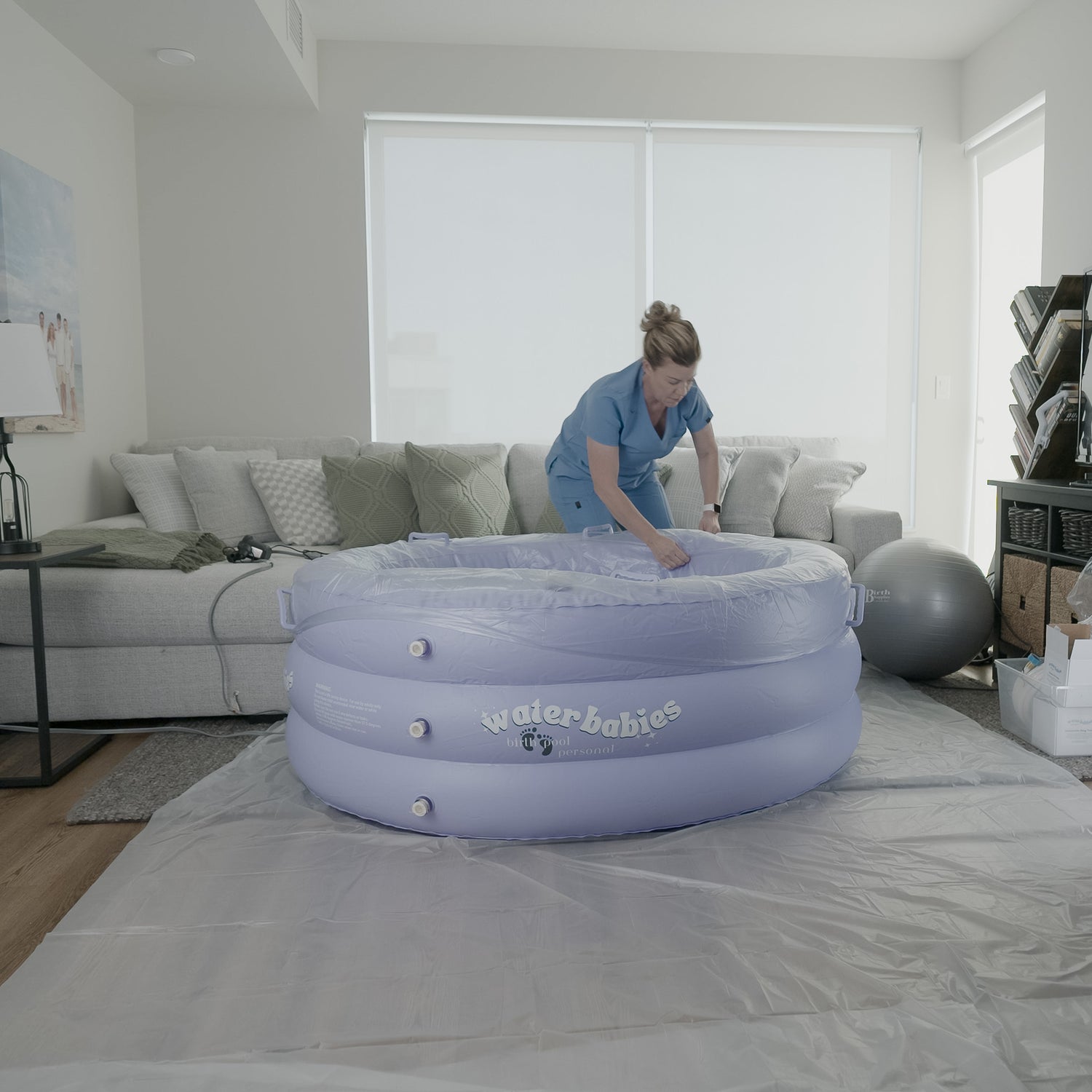
Fit the liner
To fit the liner, start by lining up the cup holders and continue to fit the liner over each handle until complete.

Once you have fitted the liner, you can go back and inflate the top ring until firm.
Do not over-inflate your pool which puts unnecessary pressure on the seams. It should however be firm enough to feel good leaning over the sides.
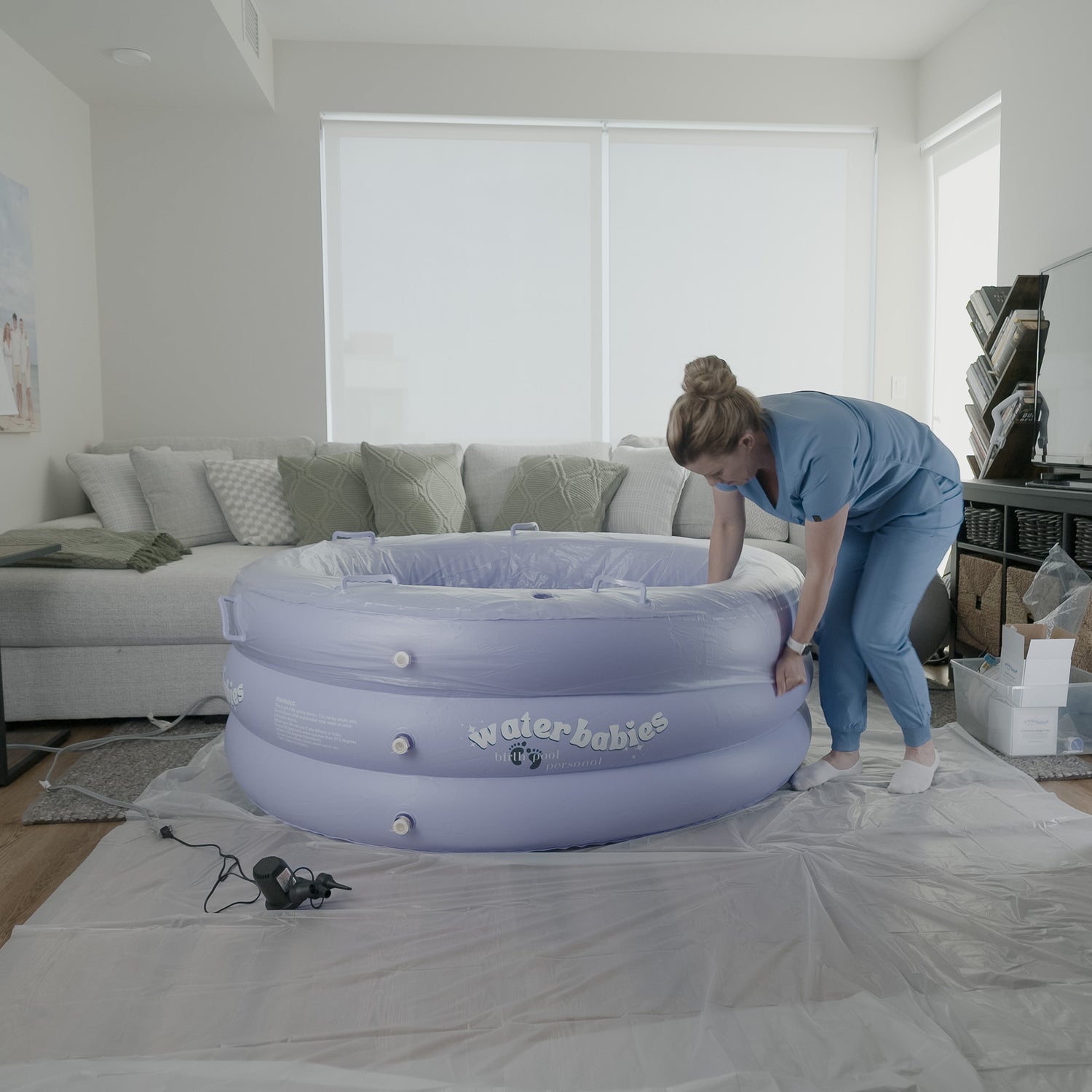
Tuck the liner into the corners of the pool and around the seat. Pull the liner over the sides for a snug fit.
Don't worry if you see air is trapped under the liner - this will escape through the gaps when the pool is filled with water.

Connect water source
You will need a clean drinking water hose and a faucet adapter to connect to your water source.
Hint: Make sure ahead of time that you have the appropriate connector, this could take some research. Especially if you have European faucets. (see video)
Once you have connected the water source, run hot water through the hose and into drain or bucket for 3-4 minutes. This will clear it of any possible debris or dust before using to fill the birth pool.
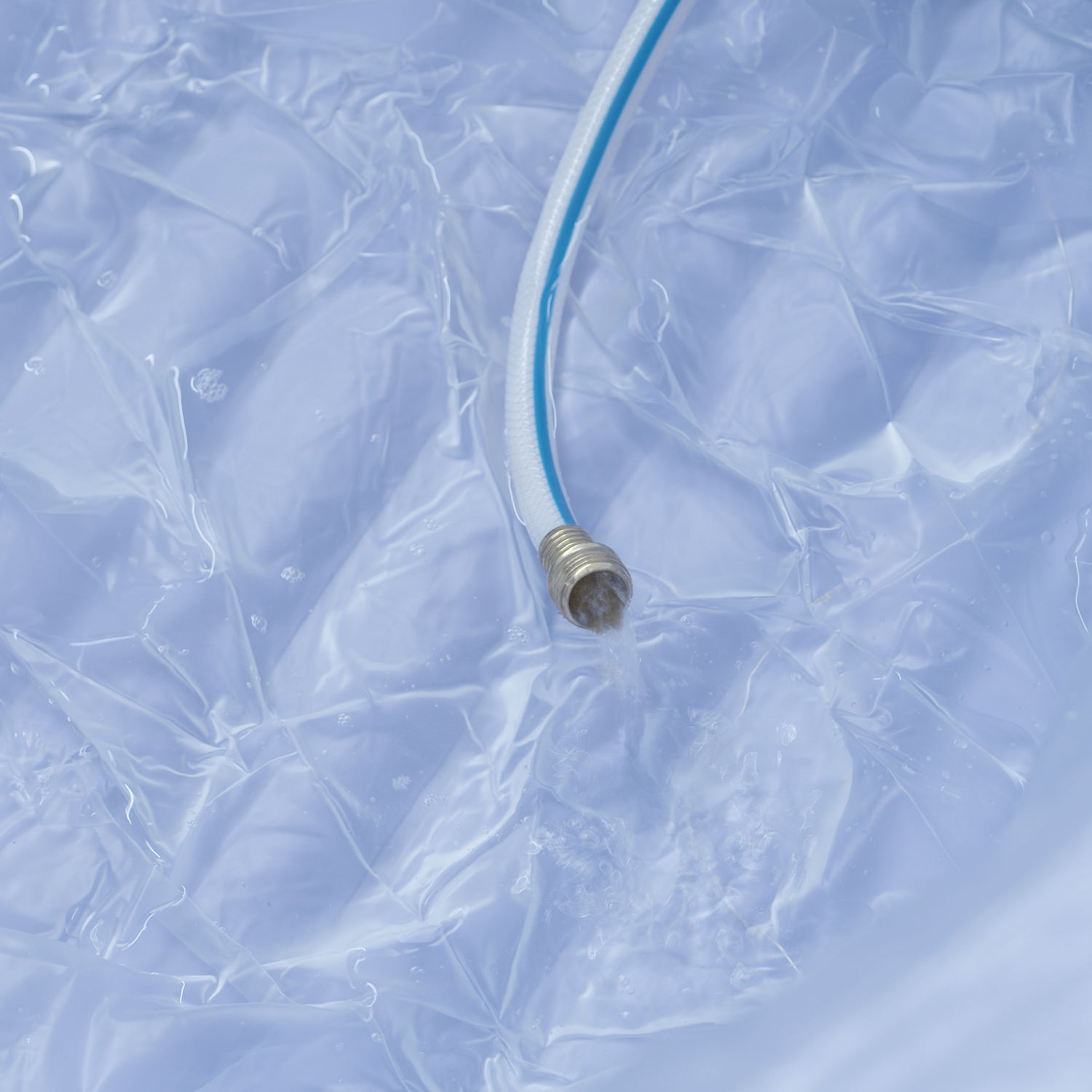
Start filling the pool
Now you are ready to begin filling the pool with water. Use the handles on the pool to hold the hose in place.
Safety tip: Move the hose out of the way so no one trips on it.
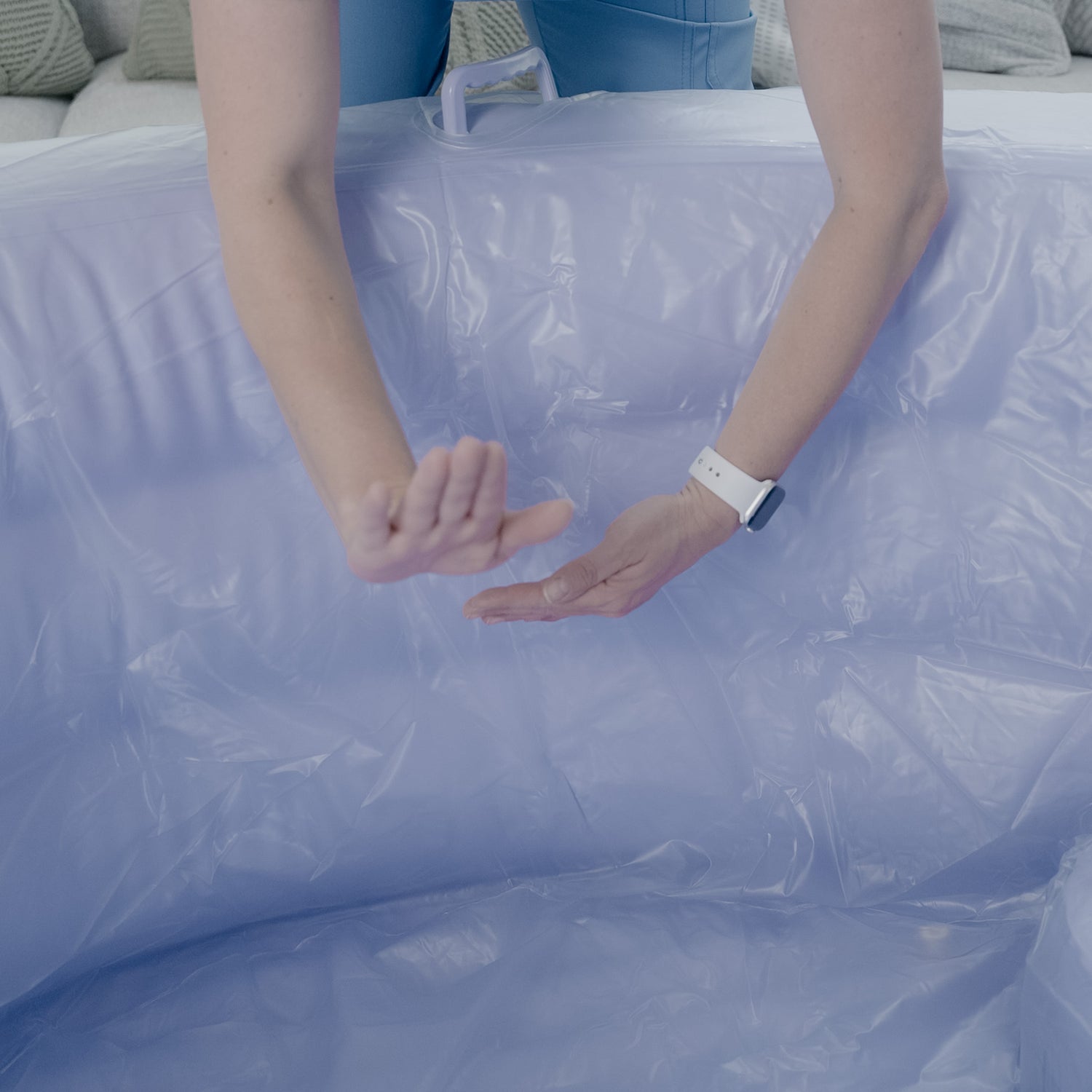
Fill to about half way
Only fill the pool to about half way to start. Once the mother gets into the pool, the water level will raise and we need room to add more hot water later. We also don't want it so full that water is spilling over the sides as mom is leaning on the sides and caregivers are leaning over the sides.
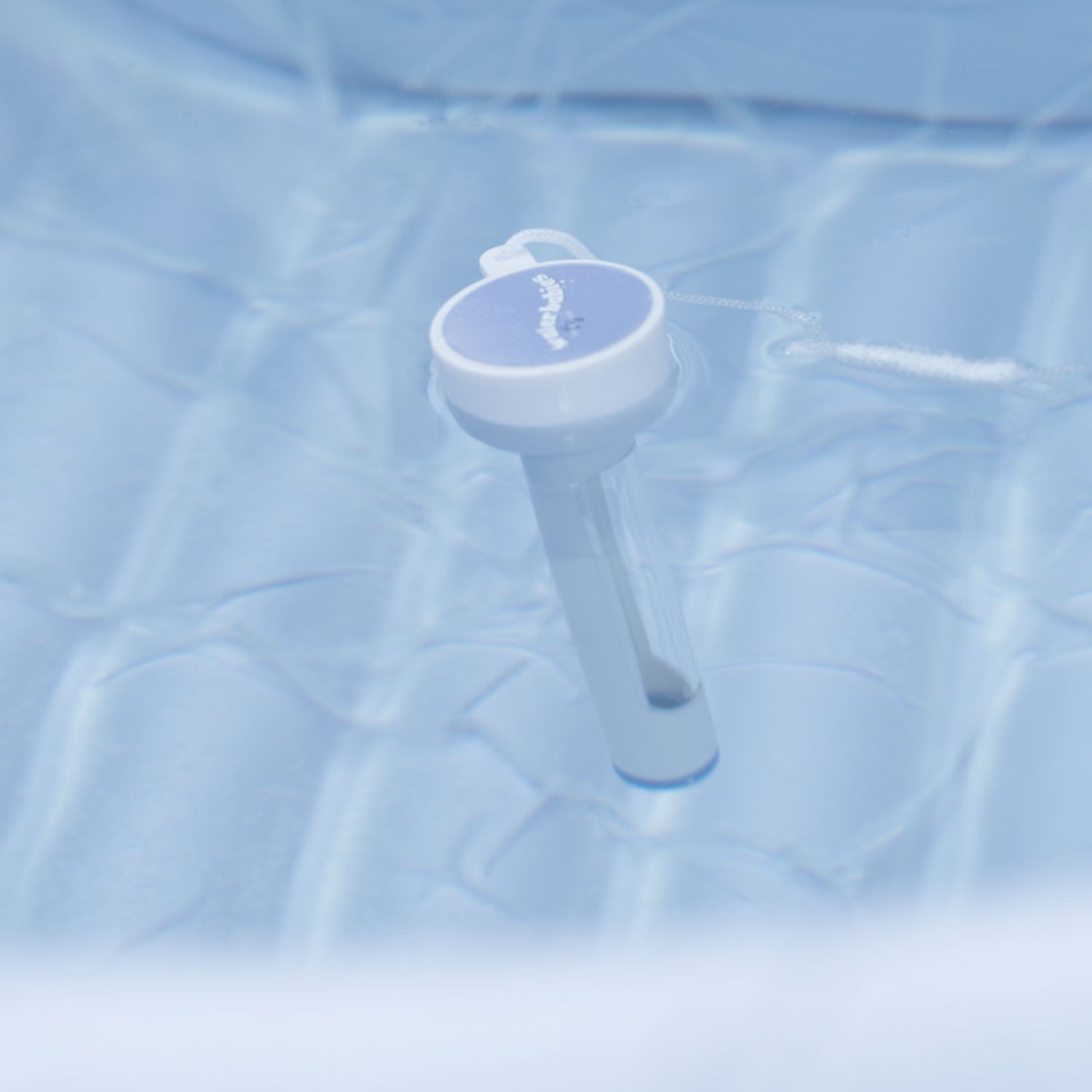
Water temperature
The ideal temperature for the water would be approx. 36.5-37.5 degrees.
Expect the temperature to drop by about 1 degree per hour.
Caution: Be very careful when adding hot water during labour. Ideally you would wait for Mom to get out for a bathroom break or exam and add the hot water and mix before Mom gets back in.
When removing water, use a clean bucket or bowl. Having a large 5 gallon pail closeby would be ideal and is very useful for cleaning the pump and hose later.

Clean debris
Before emptying the pool, use a debris net (fish net) to remove any debris that might clog the hose or submersible water pump.
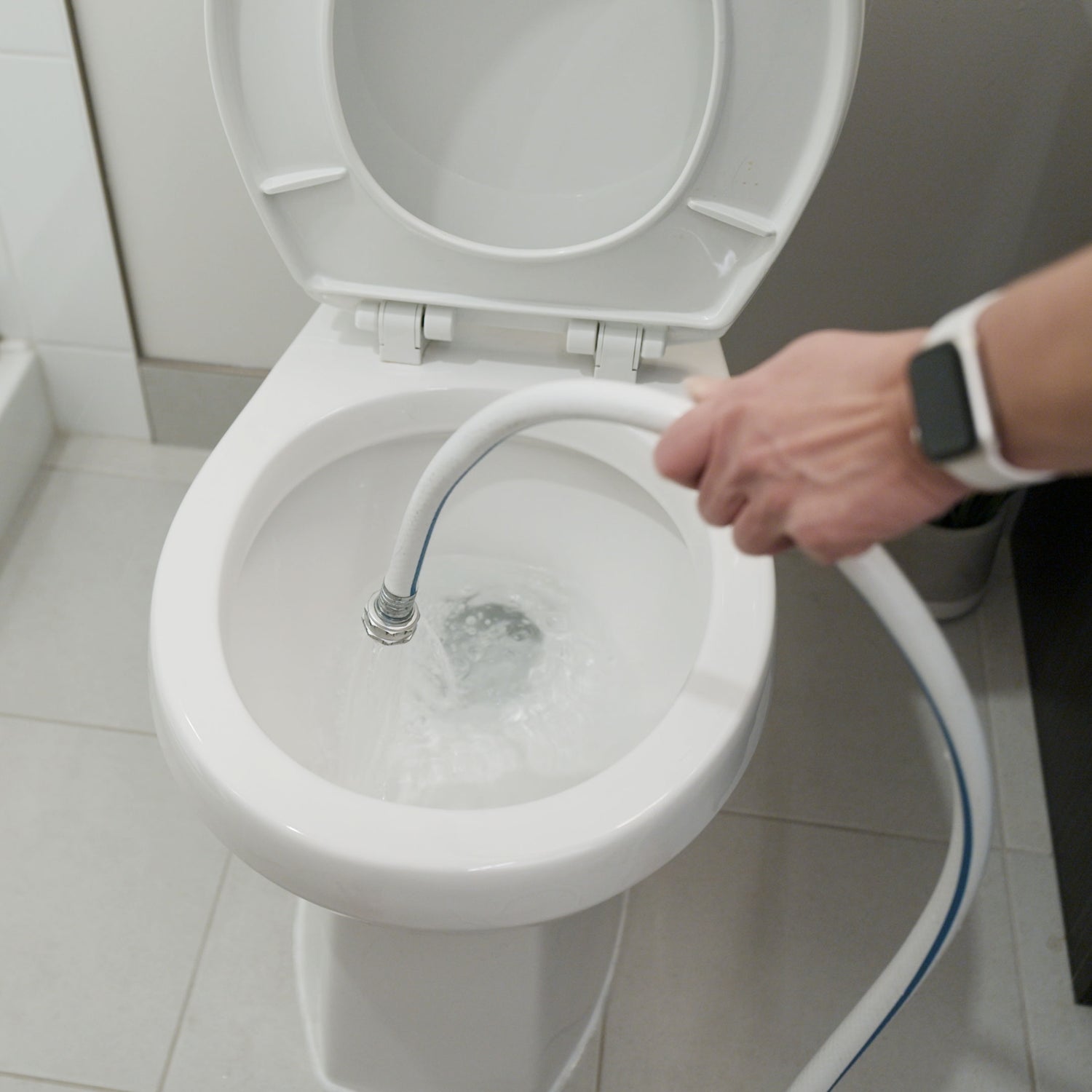
Emptying the pool after the birth
Disconnect the hose from the tap and attached the appropriate end of the hose to the submersibel water pump and the other side into the toilet or other suitable drain.
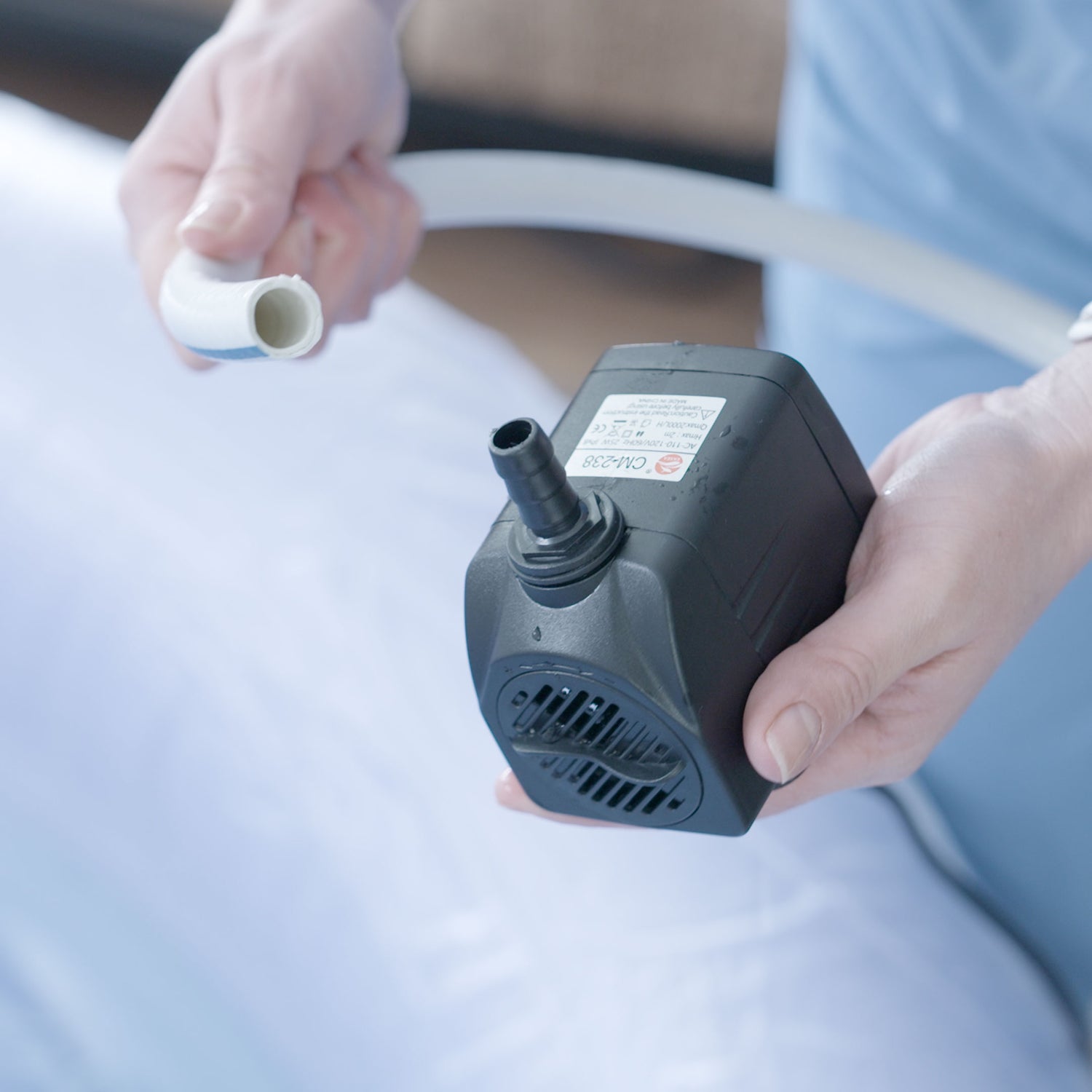
Attach submersible water pump
Attach the hose tot he submersible water pump using the appropriate attachments.
Note: The hose does not need to fit super snug in order to drain your pool effectively.
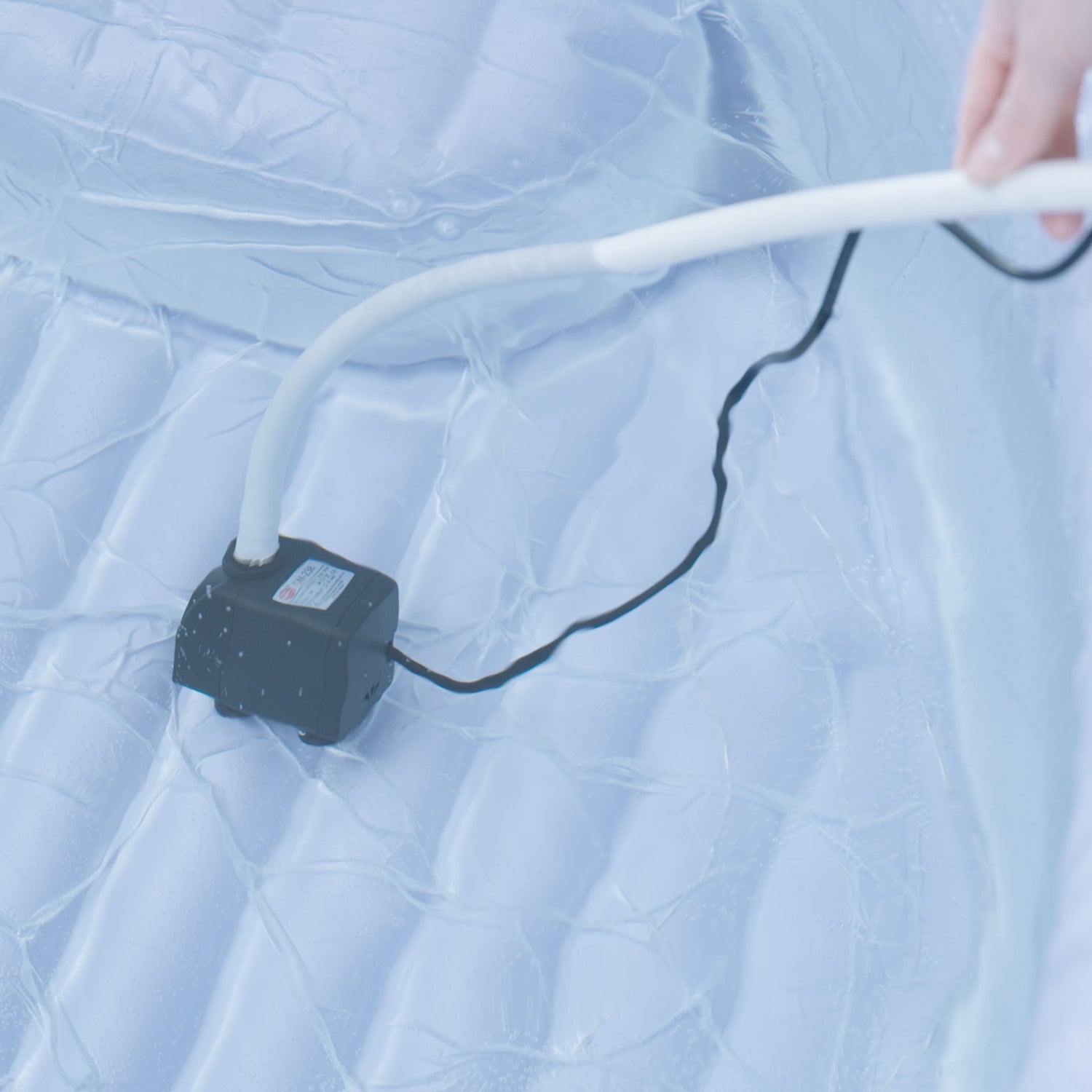
Drain the pool
Drop the sub pump into the water. Only after that do you plug it into the electrical outlet which will turn it on and allow it to start pumping water out through the hose to the toilet or drain.
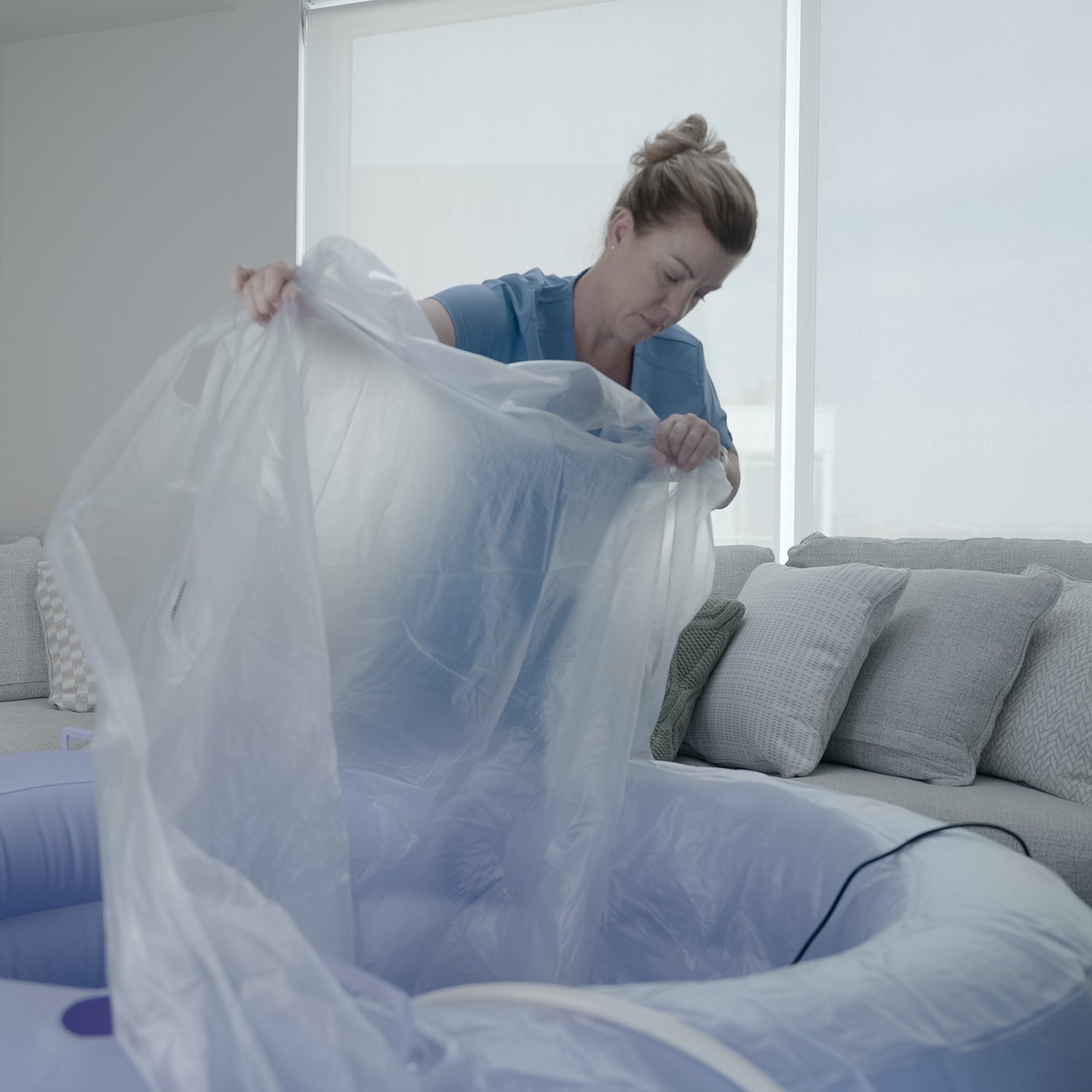
Once the pool is almost empty, the pump will start sucking air. At this point you can left the liner up off one side of the pool, moving the remaining water to one side and allowing the pump to drain the last of the water.
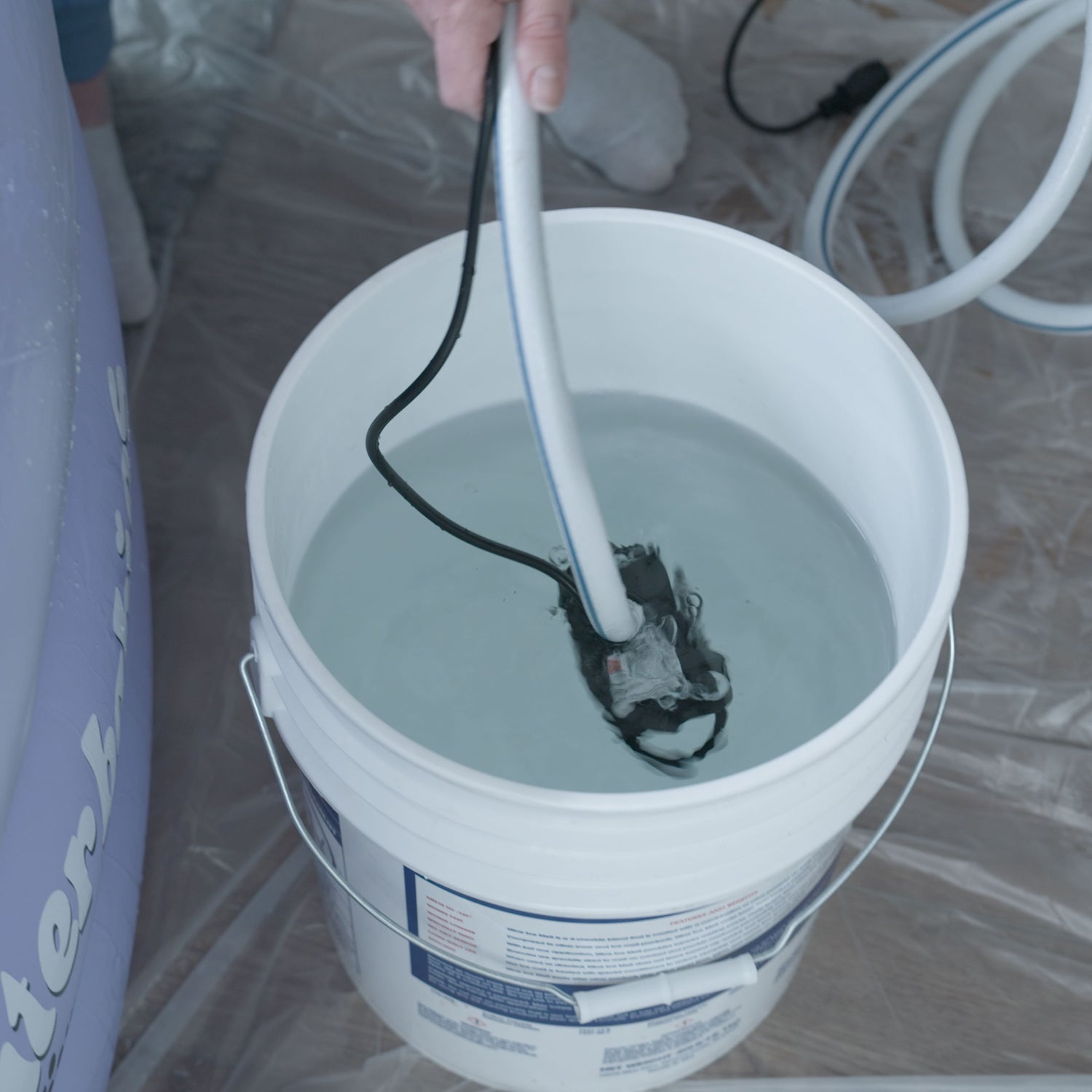
Remove Pump
When you remove the pump, place it directly into a bucket of clean hot water. Turn the pump back on and allow it to drain the bucket completely, clearing all the remaining debri.
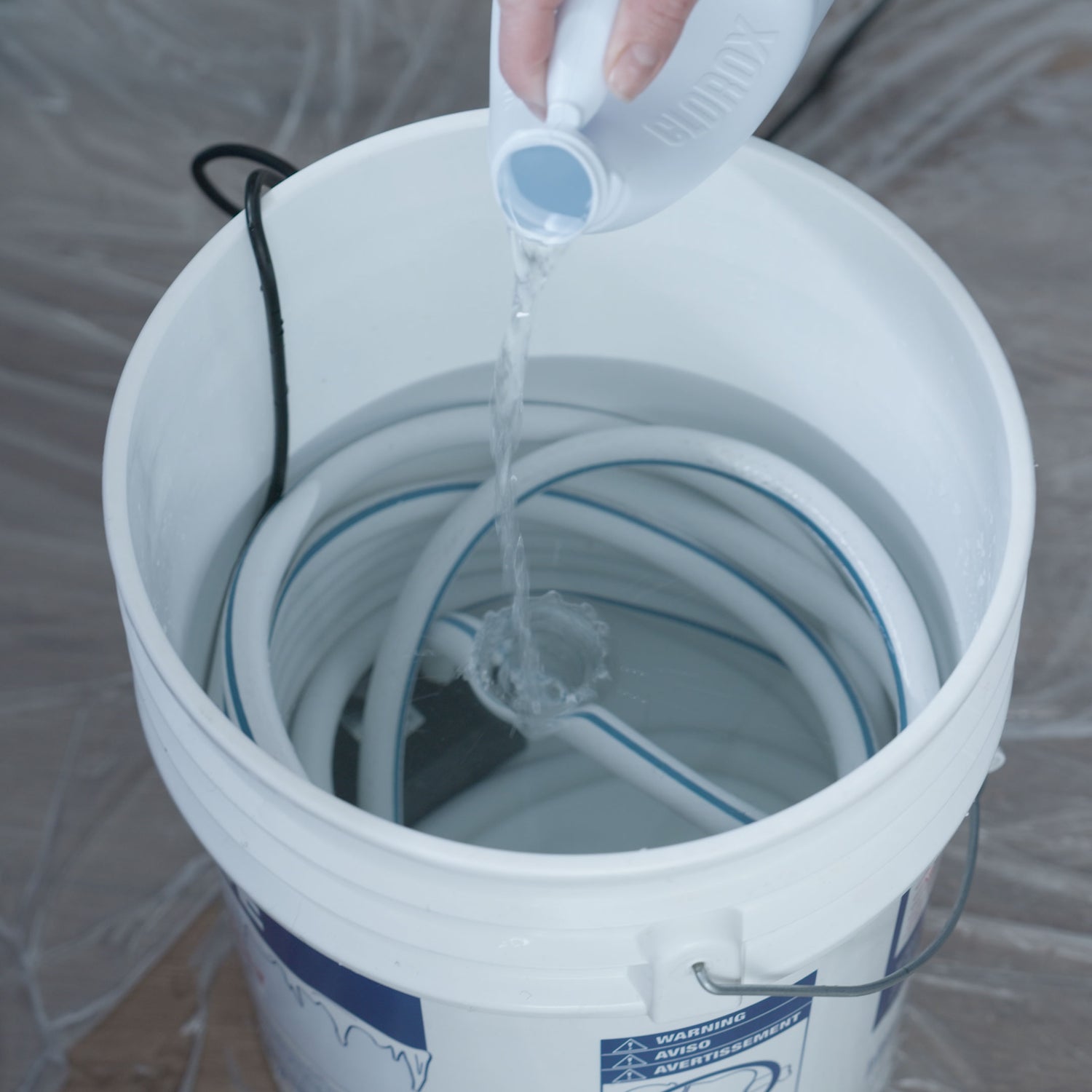
Clean pump
Once the bucket is empty, fill it again with hot water, coil the entire hose inside the bucket with the pump, add approx 1 ounce of bleach and then turn the pump back on to circulate the bleach water throughout to disinfect everything.
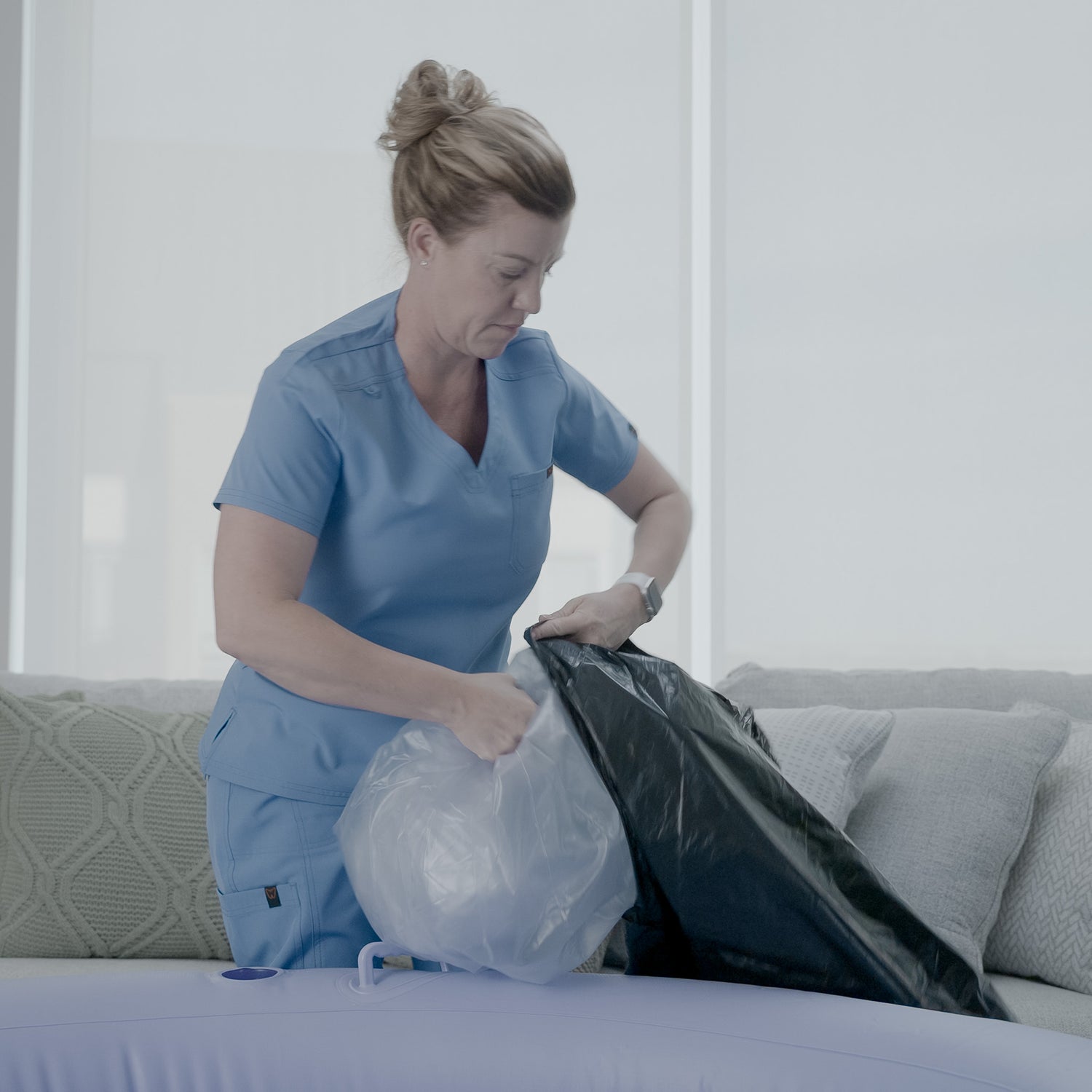
Dispose of single use items
There may still be a little water left in the pool and that's ok. Use the liner to dispose of the rest into a train bag.
Hint: Add all disposable items (debris net, hose, mirror, gloves, etc) into the liner before you wrap it up to dispose of.

Clean & Dry
Now it's time to clean the pool. Even if you used a liner, there will still be condensation at the bottom of the pool that will need to be cleaned.
Clean using a non-abrasive disinfectant that will not deteriate the pool. Great examples are: Accel Prevention Wipes or other hospital grade wipes that are used for hospital beds and equipment. Peroxide is a great disinfectant that is also effective for removing blood stains on towels, etc.
Once cleaned, leave your pool to dry "completely" before folding up. This is a very important step.

Where will you store the pool?
If you are using your pool in a hospital or birth centre it would be ideal to leave your pool inflated between uses. Though, not fully inflated.
Store in a safe place where it won't get punctured and at a consistent room temperature.

Deflating the pool
If the pool needs to be put away, start by releasing the outer (clear) valves and the pool will deflate quickly. You can use the air pump in reverse to remove the rest of the air from each chamber, floor and cushion to make folding it up much easier.
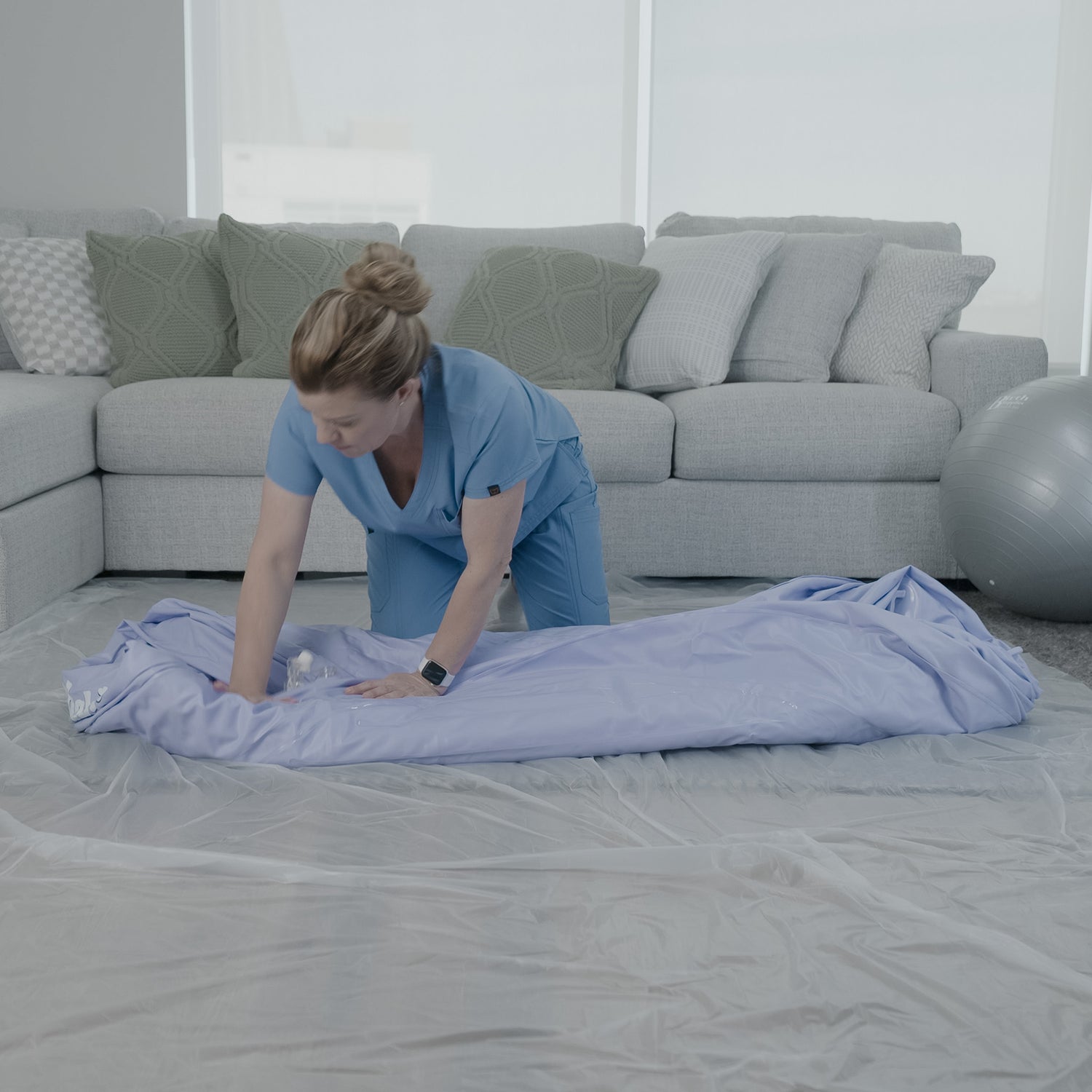
Folding the pool
It is essential that the pool is folded neatly to avoid damage.
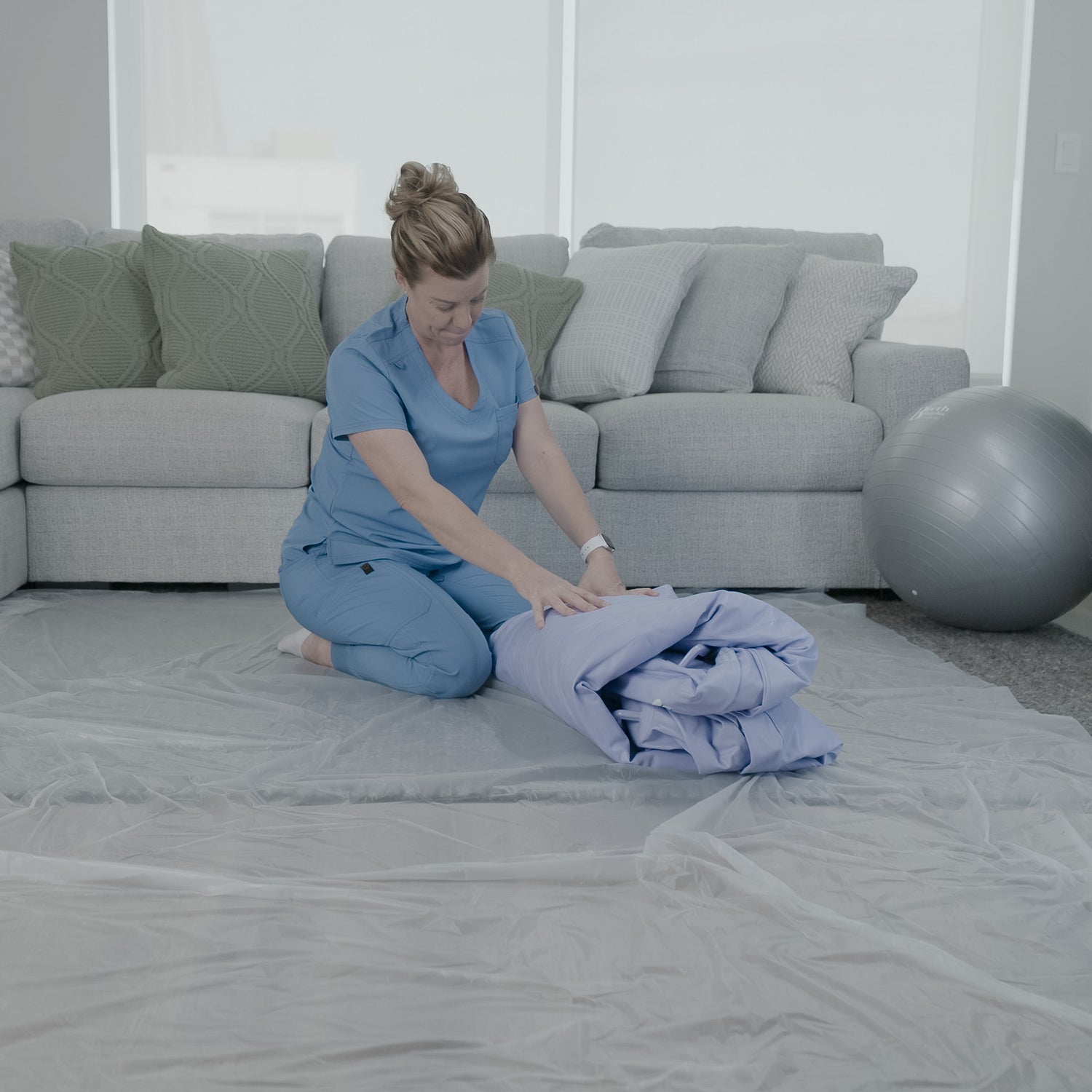
Store your pool
Store your pool in a bag or storage container. Keep safe from punctures and extreme heat or cold temperatures.
